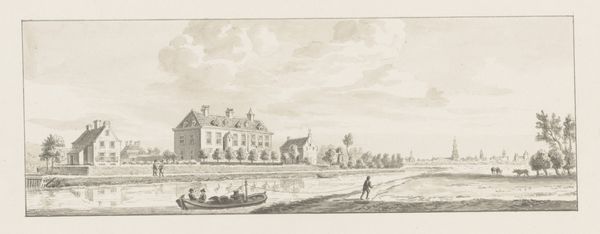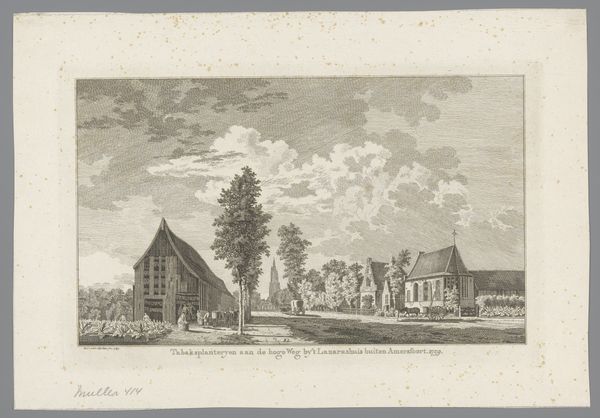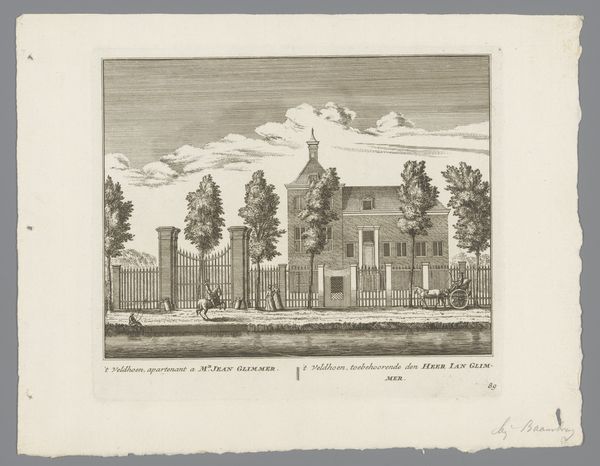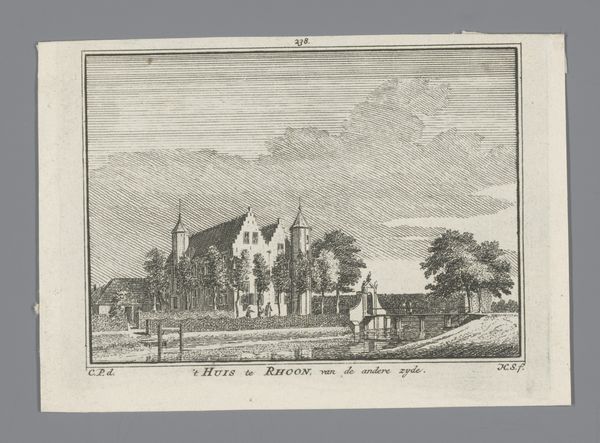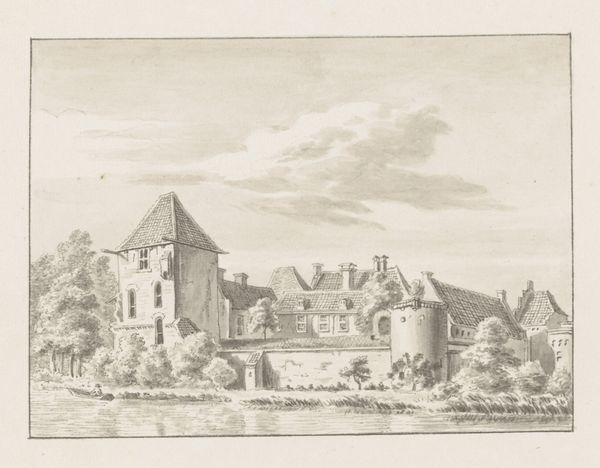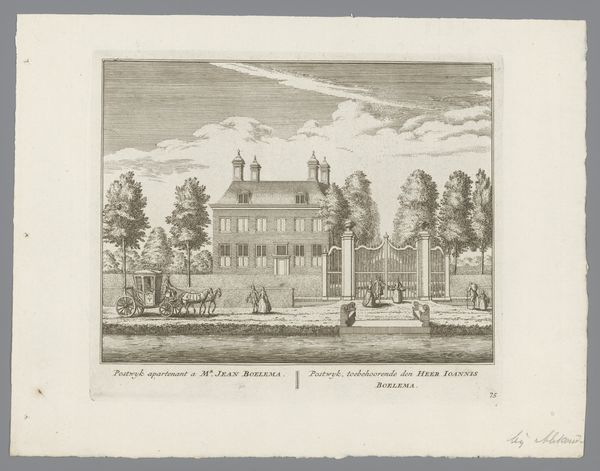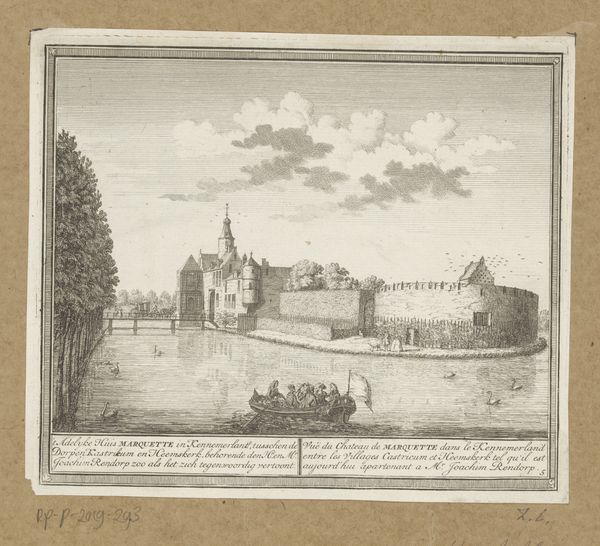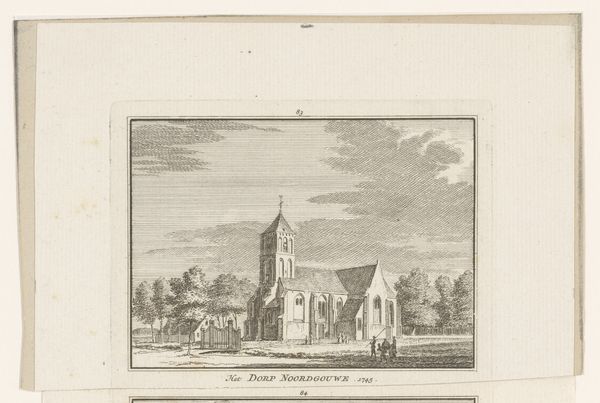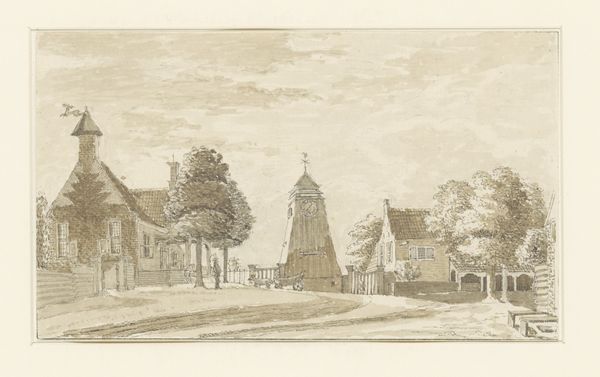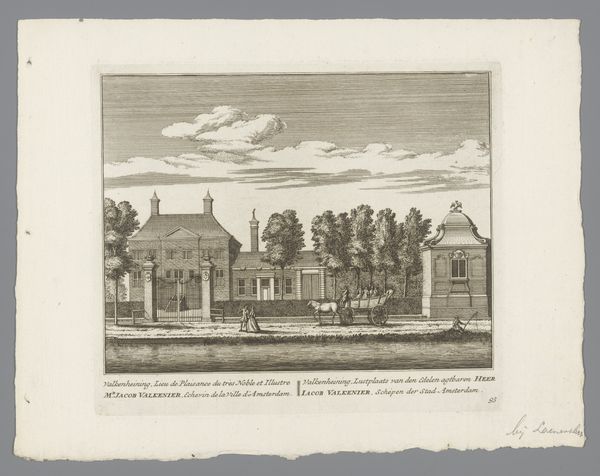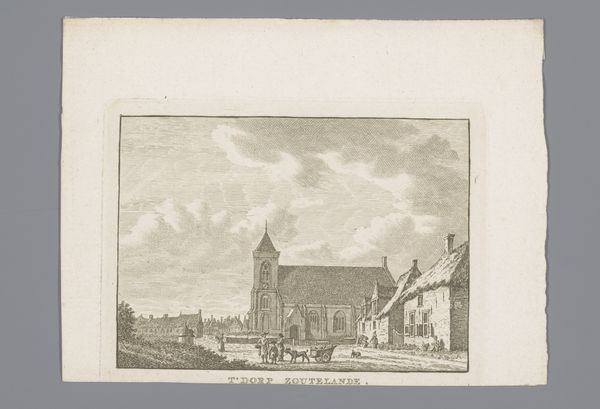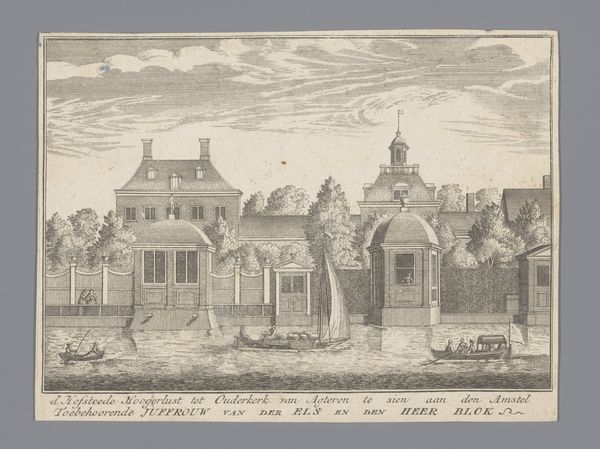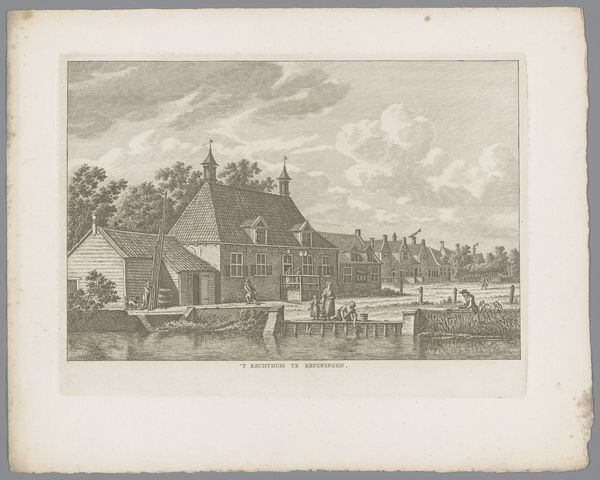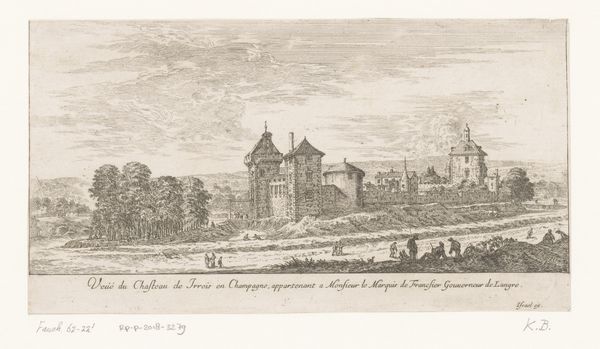
print, engraving
#
dutch-golden-age
# print
#
landscape
#
cityscape
#
engraving
Dimensions: height 98 mm, width 182 mm
Copyright: Rijks Museum: Open Domain
Curator: Looking at this engraving, titled "Gezicht op de loodwitmolen aan de Boerenwetering," created sometime between 1725 and 1764, I'm immediately struck by its formal serenity. The Dutch Golden Age aesthetic really shines through. What are your initial impressions? Editor: There’s a quiet dignity to the scene. The tonal range feels deliberately restrained, focusing our attention on line and form rather than dramatic light. A real harmony of rural and industrial. Curator: Indeed. And think about where these lead-white mills sat within Dutch society. Lead white pigment was incredibly important for painting at the time. This mill essentially represents the industrial backbone that enabled so much of the celebrated art from the Golden Age. Editor: It's fascinating to consider that artistic output was, in part, dependent on these often-overlooked industrial processes. I note the composition relies heavily on horizontal lines, from the rooftops and fences to the horizon, which lends stability and a sense of calm. Curator: This print gives us insights into the complex economics and the social structure. See those tiny figures in the foreground tending to what looks like harvesting? The print reminds us of the essential labor that supports any industry. The windmill as both a functional object and a subject of art says much about a society's self-image and values. Editor: The artist's rendering of those human figures is so interesting too—almost incidental. Yet they ground the vastness implied by the scene and remind us that this industrialized process, and landscape as a whole, is inextricably linked to the rhythms of daily life. The engraver even used hatching to give dimension and atmospheric density to the cloudy sky. Curator: Exactly. The image serves both as a picturesque view and an important historical record of the area near the Boerenwetering. A crucial location that speaks to the manufacturing undergirding the art. Editor: Reflecting on this print, it feels almost didactic in its delicate portrayal of this relationship—a quiet invitation to contemplate how art and industry were interconnected in the 18th century. Curator: Absolutely, an invitation to consider what went into that era’s artistic achievements, going beyond what was just on the canvas. Editor: Yes, a reminder of the human and economic context from which art blooms.
Comments
No comments
Be the first to comment and join the conversation on the ultimate creative platform.
